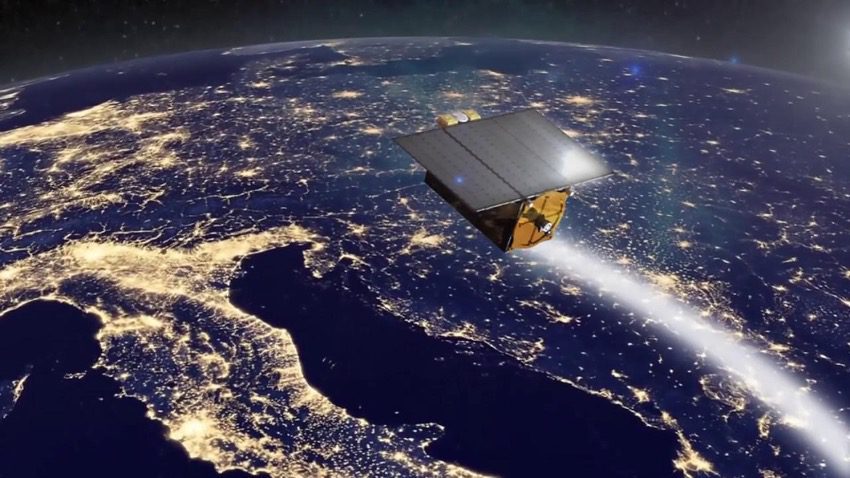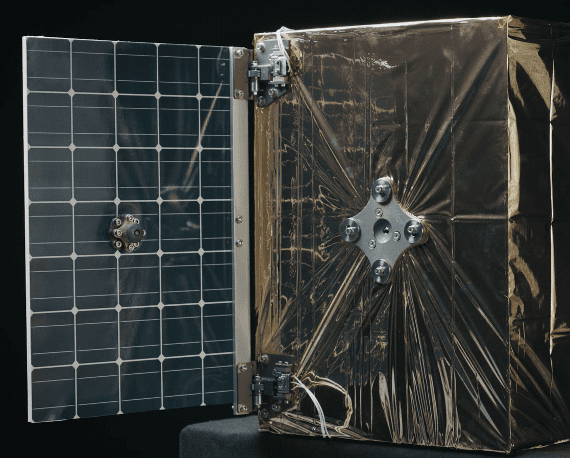- Sectors
- Aerospace & Defense
- Big science
- Biotechnology
- Fintech
- Insights

μHETsat is an ESA Partnership Project with the Italian Space Agency (ASI), built by the Italian company SITAEL. It is the first fully electric satellite to go into space to verify the behaviour and performance of the bus and a low power Hall Effect Thruster whose characteristics represent the state-of-the-art of this technology.
μHETsat, whose weight is less than 80kg, will not depart from ground as will be firstly carried to an altitude of approximately 35,000 feet. Its electric thrusters are a new winning feature that matches the needs of the New Space industry and of the many companies in the space sector that increasingly focus on minisatellites.
The μHETsat microsatellite has two deployable solar arrays consisting of one Aluminum Honeycomb panel in each wing, commonly known as Sandwich. They are lightweight but guarantee stiffness and strength, as well as better deployment capability. These panels are stowed during launch and, once in orbit, they will be fully deployed with the help of release and deployment mechanisms.
Image: μHETsat Satellite. Source: SITAEL
The μHETsat team required a complete deployment solution for the solar panels, including Hold-Down and Release Mechanisms (HDRMs).
Moreover, the use of field resettable HDRMs was highly preferred for operational purposes, to save cost and time during the validation tests at system level.
Finally, since the μHETsat platform will be used as the baseline for future satellite missions, the HDRM and hinges needed to be standard products, cost affordable and with a short lead time.
ARQUIMEA implemented the entire solution for the release and deployment of the solar array, consisting of one HDRM and one deployment mechanism with two spring-motorized hinges per panel. The HDRM solution is based on ARQUIMEA’s Hold-Down and Release Actuator called REACT. A cup-cone was designed to accommodate the REACT to the spacecraft and a bolt catcher was assembled to the solar panel to secure the bolt after release. The deployment mechanism is driven by springs with latch on deployed position and includes a sensor to detect the start and end of deployment.
An EQM model of the system was produced to validate the solution. The acceptance of the EQM was successfully performed and this solution was tested considering the design and operation requirements and conditions of the spacecraft and the specific characteristics of the solar array.
ARQUIMEA’s REACT devices are low-shock Hold-Down & Release Mechanisms (HDRM) which function is to firmly fix a payload during transportation or launch and later release it by electrical activation. The REACT implements a redundant trigger with two different motorization options based on Shape Memory Alloys (SMA), covering wide actuation temperature ranges and providing on-site manual reset capability to the end user.
A cup-cone and a bolt catcher are used to integrate the REACT to the spacecraft, keep the solar panel stowed and secure the main bolt after the release, thus avoiding any potential damage in the structure.
ARQUIMEA’s deployment mechanism is based on spring-motorized hinges designed to perform the rotation opening of a solar panel or any other deployable structure from the platform. The hinges carry out a soft movement of the solar panel, guaranteeing the motorization safety margins and avoiding return effects. Once opened, the device holds the panel fixed in 90o position. Each hinge contains a mechanical switch controlling the proper deployment of the structure.
The HDRM and deployment mechanism can be used together or separate and typical applications include solar arrays, antennas, booms and masts, reflectors, cover doors, scientific instruments, shutter mechanisms, large structures, launch locks for gimbals, thrusters, stage separation, caging mechanisms, etc.

The system EQM will complete the environmental tests at the Space Qualification Laboratory of the Italian Aerospace Research Center, where it will be exposed to mechanical vibration testing, simulating the violence of a rocket launch, as well as to the extreme temperatures and vacuum simulating the near-Earth orbital environment. Those tests will be carried out in May 2020.
ARQUIMEA’s HDRM + DEM proved to be the right solution for the solar array deployment. The safe release and deployment of the panels is critical to guarantee the success of the mission.